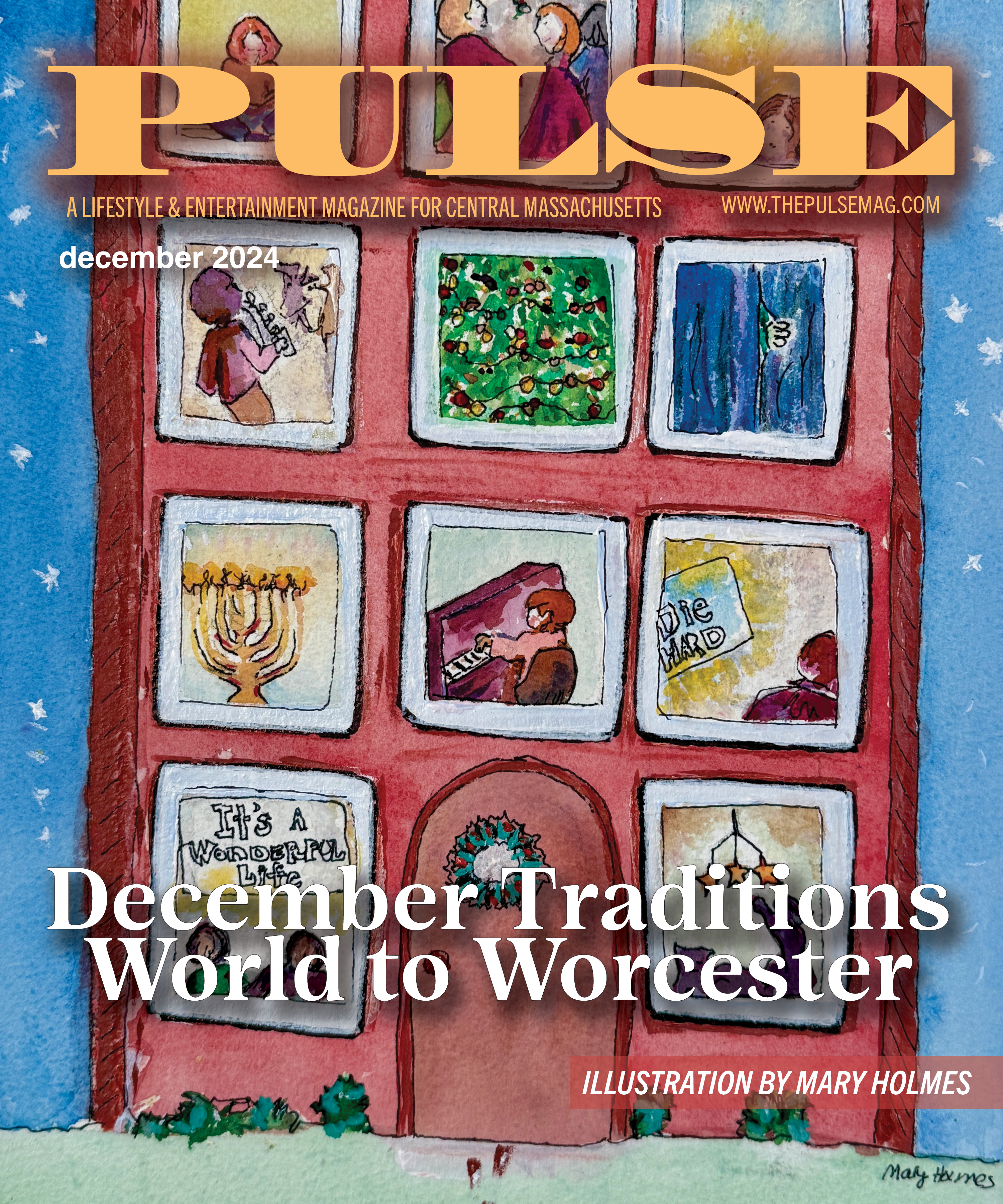…and his Knights in Shining Armor
By Tine Roycroft

For those who imagine that in past lives they were princesses or kings, William MacMillan of the Higgins Armory Museum brings a wake-up call.
“Everybody always thinks, ‘If I were in the days of yore, I’d probably be a knight,’” he jokes. “No ~ you’d probably be tromping around defending some other feudal lords’ property. There weren’t 500 Cleopatras. There were lots of people pushing stones up the pyramid. Most of us would have been average people.”
MacMillan knows his feudal facts. At the Armory, he handles the conservation and installation of each piece of arms and armor and is constantly thinking of interesting ways to present the items for visitors.
“The best thing that I can do is to stay out of the way and let the pieces talk for themselves,” MacMillan explains. He’s worked in installation for 20 years and knows the power of each suit of armor. “The worst thing that I can do is to make an installation overcomplicated with too much explanation.”
MacMillan was a student of Theology when he became immersed in doing volunteer installation work at the Grove Street Gallery in Worcester. Higgins Armory called the Gallery one day, looking for someone with just those kind of skills and enthusiasm. MacMillan loved the work, and really liked the idea of being paid for it, so he headed to Higgins. After 8 years of working for the Museum, he was officially brought on staff.
Part of MacMillan’s position involves cleaning and caring for each piece at the Museum. He trained with the arms conservator of the New York Metropolitan Museum of Art and learned how to conserve all arms pieces.
“We deal with temperature and humidity issues when caring for pieces, they are very sensitive to humidity changes,” he explains. “Cleaning techniques will vary from object to object. Some just need a good dusting and to be kept dry. Other pieces, I’ll spend about 6 months on. “
Over time, MacMillan has seen his share of installations. But a personal favorite was a collaboration between the Armory and the Worcester Historical Society which focused on Worcester’s connections to WWII. MacMillan was especially moved by pieces such as a Purple Heart, a Congressional Medal of Honor and artwork by Harvey Ball. According to MacMillan, it was a touching representation of his favorite city.
However, being so closely linked to the past can have some drawbacks, too. MacMillan can usually be found hard at work at the Armory, but even he tries to avoid staying too late into the night.
“The spirit of John Higgins tends to make himself known late at night, which can be unnerving at times,” MacMillan says. “Like when you know you’re the only one in the building and you hear doors open and close. But Higgins loved the museum, loved the collection. I can see him coming back and making sure that everything is being taken care of.”
For more info on the Higgins Armory Museum, go to www.higgins.org.






Great piece. I had the pleasure of working with Bill at the Higgins for 6+ years, and he’s always had the knack of finding a perfect balance of professionalism, appropriate reverence for the objects, and the light-hearted perspective necessary when you’re a pacifist who spends all day surrounded by antique objects of destruction. (And Mr. Higgins has certainly not left the building – although during my tenure, he seemed to favor the early morning hours!)